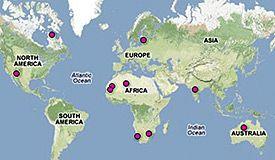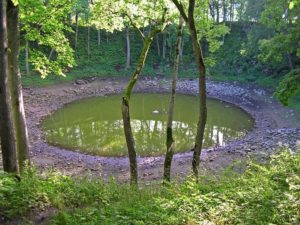World 🢖 Africa 🢖 Mauritania
Impact craters 🢔 Geological wonders 🢔 Categories of wonders
Wonder
Aouelloul crater
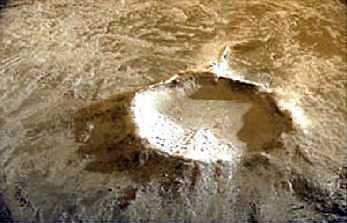
 In short
In short
More than 3 million years ago the desert near present day Atar was hit by some 20 m large meteorite and Aouelloul crater formed. Today this is one of the best preserved impact craters on Earth.
 44.8%
44.8%
GPS coordinates
Location, address
Diameter
Depth
Age
Map of the site
If you see this after your page is loaded completely, leafletJS files are missing.
 In detail
In detail
Discovery
Local people knew about the existence of this unusual place since ancient times. In the rims of the crater are several ancient tombs. Locals call this place – "hofrath A’welloul" ("Hofrat Aouelloul" – Aouelloul Hole).
First European to see this crater was A. Pourquié, who saw it from an airplane in 1938 while making the aerial photographic mapping of this area. Théodore Andre Monod (Natural History Museum of Paris) reached the site on foot in 1950 and both published account of their discovery in 1951 (1.).
Morphology
Crater has well-defined rims, which rise 15 – 20 m high above the surrounding plains. The diameter of the crater is approximately 390 m – this is a comparatively small impact crater.
The bottom of the crater is up to 53 m below the rims. Sometimes a small, perennial pool of water forms in it – this means that meteorite has not cracked the bedrock.
Geology
Meteorite here met Ordovician sandstone and quartzite rock. The porous mass of sandstone softened the impact, but nevertheless, the consequences were significant. The explosion raised thousands of tons of sandstone and quartzite rock, some of it melted. Now the rim of the crater is formed from a coarse rock thrown up from the crater, part of sand is vitrified by the extreme heat.
The bottom of the crater is covered with a thick layer of aeolic sand and silt. There have been no explorations but it is assessed that the thickness of this layer is approximately 23 m – thus the depth of the crater is up to 56 m without counting the rim or roughly 76 m if the height of the rim is added.
Tectites – main source of information about the meteorite
Only one piece of the meteorite has been found near the crater and it is even not clear whether this piece is from the same meteorite which formed the crater. This stone – Zerga meteorite – was found in 1973.
To the south, south-east, and north from the crater though are found unsightly, semi-transparent, brown stones – tektites. Tectite is natural glass, formed by the heat and scattered by the impact.
Tectites provided valuable information about the Aouelloul meteorite. Analysis of their chemical composition shows that the content of osmium, iridium, and nickel in this glass exceeds the content of these elements in surrounding rocks. Thus it was proved that the Aouelloul crater is an impact crater. The analysis provided also data about the age of meteorite – it is 3.1 ± 0.3 million years, Pliocene period.
This meteorite most likely was chondrite, e.g. it was a stone meteorite, albeit with a rather high content of iron.
It is hard to tell the direction of the impact, but a bit to the north is found another, smaller crater, possibly formed by a smaller piece of this same meteorite. This impact crater shows that the main impact was in the center, e.g. meteorite struck from above.
Very rough calculations show that, if the meteorite approached Earth with a speed of 20 – 25 km per second, this meteorite had a diameter of some 20 m.
Meteorite seekers
Sometimes (elsewhere) tektites are beautiful gemstones, but the main value of tektites is their rarity, these are valuable items for collectors.
The desert near Adrar is almost lifeless and the red hue of sand makes it similar to Mars. Heat here for most time is almost unbearable and Europeans, who search for tektites, soon conclude that the outcome is not worth the effort.
Most tektites are found by boys – shepherds, who sell them to merchants. These stones rarely exceed the size of a fist.
In local markets most tektites are falsifications. The few tourists coming to this area often are buying just a slag from old iron smelters and even stones processed by people in Neolithic Age.
Crater is privately owned, visitors are asked to leave cars outside the crater and not to make tents inside it.
References
- Th. Monod, A. Pourquié. Le crateré d’Aouelloul (Adrar, Sahara occidental). Bulletin de l’Institut fondamental d’Afrique noire, 1951, 13, p.293 – 311. Accessed on December 26, 2012.
- Cosmic Secrets. The Enigmas on Earth – Impact Craters on Earth. Accessed on December 26, 2012.
- Christian Koeberl, Wolf Uwe Reimold, Steven B. Shirey. The Aouelloul crater, Mauritania: On the problem of confirming the impact origin of a small crater. Meteoritics & Planetary Science 33, 513-517 (1998). Accessed on December 26, 2012.
Aouelloul crater is included in the following articles:
 Linked articles
Linked articles
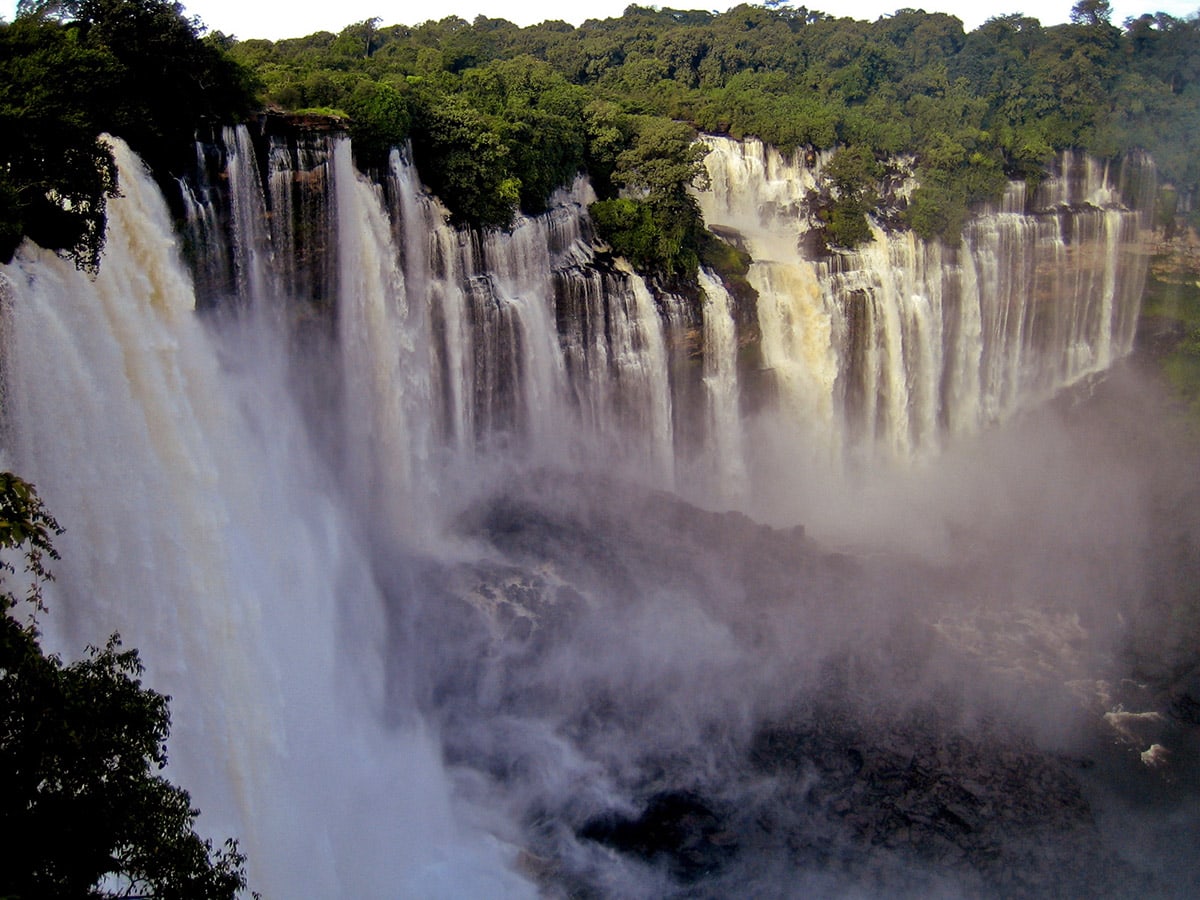
Wonders of Africa
Africa has many outstanding wonders and some of the most surprising ones are the heritage of Egyptian civilization, the vernacular architecture of the Sahel region, tropical ecosystems, and others.
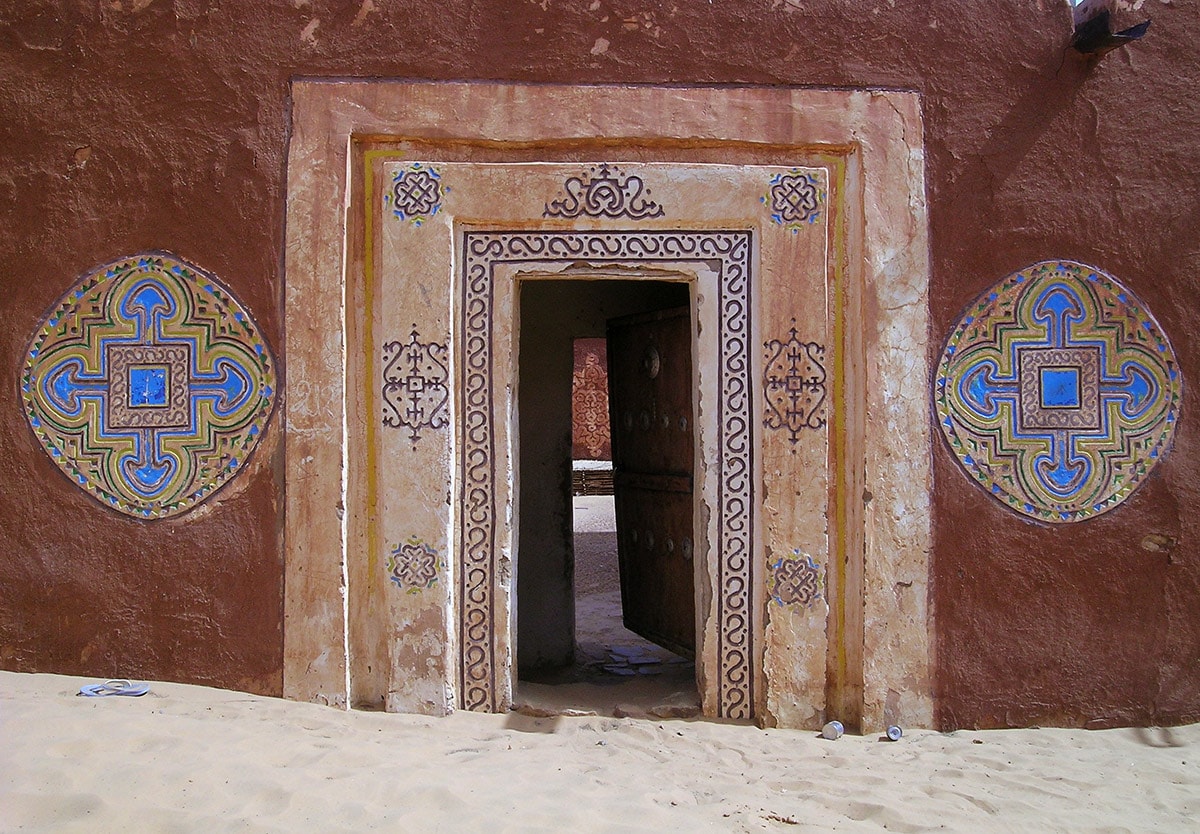
Wonders of Mauritania
Almost all of Mauritania today is desert – somewhere desolate, somewhere – with some plants, lakes, and animals.
In earlier times nature here was less harsh, and great cultures developed. People from those times have left countless cliff paintings and etchings, megaliths, and abandoned towns.
Nature of Mauritania also provides surprises – giant, smooth, and very dark granite monoliths that rise hundreds of meters above the desert, and even a wealth of life – millions of birds at the ocean, or unusual dwarf crocodiles in the desert plateau of Tagant.
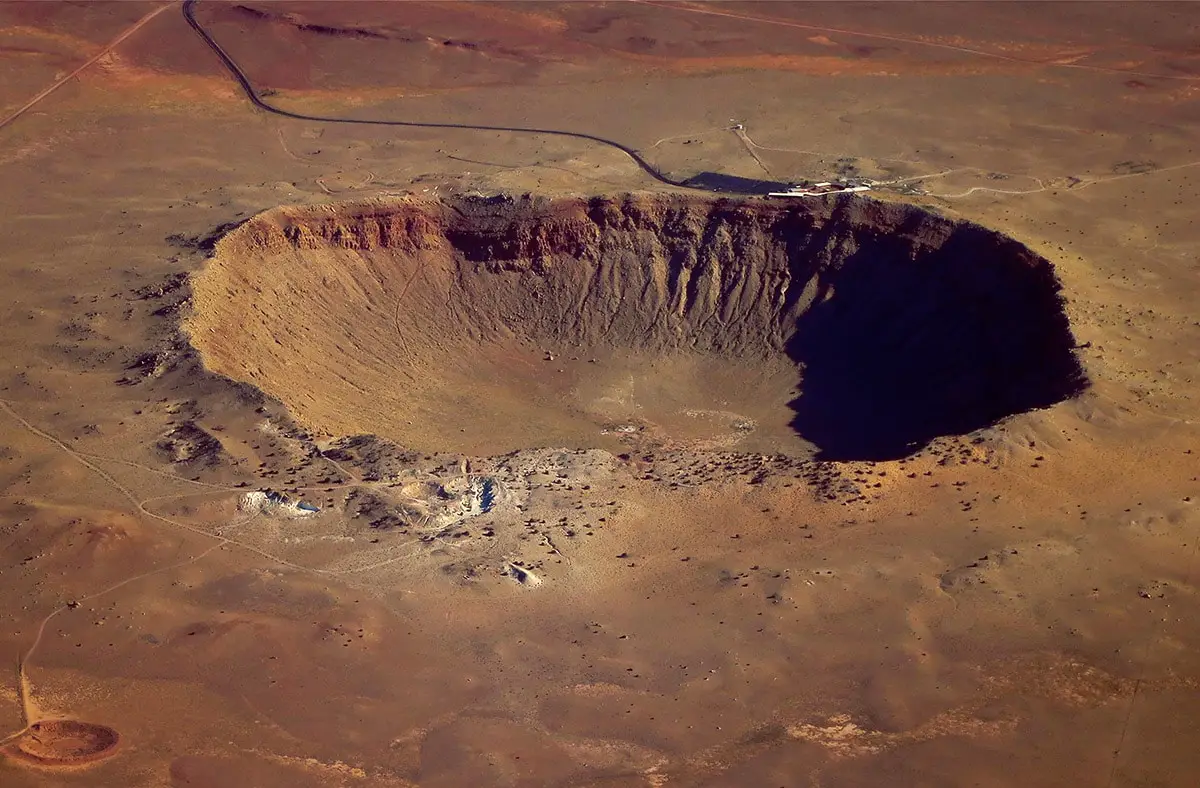
Impact craters
There are many pieces of solid matter flying around in space. And VERY frequently they fall on the surface of the Earth. There are estimates that every year on Earth fall 18,000 – 84,000 meteorites larger than 10 grams: e.g. one meteorite every 6 – 30 minutes.
This category includes outstanding impact craters – detectable scars on the surface of Earth left by a body coming from outer space. The category includes also meteorites – natural objects from outer space.
 Recommended books
Recommended books
Africa’s Top Geological Sites
Africa is home to more than the Cradle of Humankind. It was the core of the ancient supercontinent Pangaea and comprises some of the oldest and most extraordinary geology on planet Earth. This detailed and colorful book features 44 of the continent’s most spectacular and interesting ‘geosites’, from Table Mountain in the south to the eroded necks and plugs of the Hoggar region in Algeria.
Travels in Mauritania
When Peter Hudson set off for Mauritania, he knew it only as a big blank space on a map of Africa. Traveling from the capital, Nouakchott, hardly more than a desert encampment, he found among the oases and ancient caravan towns a people in harmony with their harsh surroundings.

